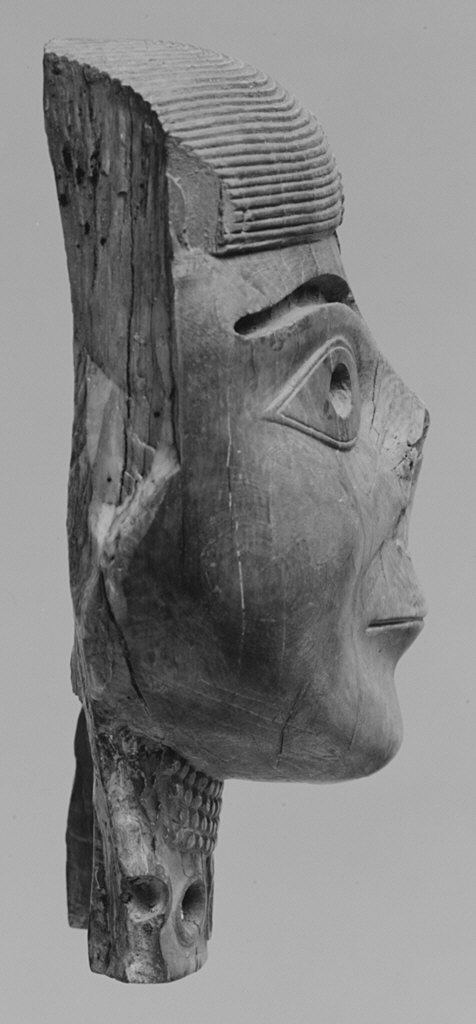Head of a female or goddess wearing a necklace
Not on view
This female head was found in a well in the Northwest Palace of Ashurnasirpal, and its warm color is a result of long exposure to the well water or sludge. It is one of the two largest ivory heads known from the ancient Near East. The other, from the same well, is now in the Iraq Museum in Baghdad. The ivory heads were thrown in the well when the palace was sacked, perhaps during the final defeat of Assyria at the end of the seventh century B.C. Originally, they may have been part of statues made from various materials, including gold, wood, and textiles, which are recorded in texts but have not survived intact. Two mortises (square-ended recesses) were cut into the flat rear surface of the ivory for the attachment of separate elements above and below. A small piece of gold inlay survives in the choker-style necklace, and the cavities marking the eyebrows and pupils, now empty, must have been inlaid in contrasting materials as well. The fleshy cheeks and chin are softly modeled, in a striking counterpoint to the otherwise stylized features of the ridged hair, large, staring eyes, and thin mouth set in a line. Broken in antiquity, the nose was repaired by a separate piece attached with a dowel, now missing and revealing a prominent socket. The figure’s features resemble those of Syrian style ivories, which are characterized by large eyes, small chins and full cheeks. Like these Syrian ivories, the nose was probably intended to be quite prominent. It is not known whether the head depicts a woman—perhaps a royal or religious figure—or a deity.
Built by the Assyrian king Ashurnasirpal II, the palaces and storerooms of Nimrud housed thousands of pieces of carved ivory. Most of the ivories served as furniture inlays or small precious objects such as boxes. While some of them were carved in the same style as the large Assyrian reliefs lining the walls of the Northwest Palace, the majority of the ivories display images and styles related to the arts of North Syria and the Phoenician city-states. Phoenician style ivories are distinguished by their use of imagery related to Egyptian art, such as sphinxes and figures wearing pharaonic crowns, and the use of elaborate carving techniques such as openwork and colored glass inlay. North Syrian style ivories tend to depict stockier figures in more dynamic compositions, carved as solid plaques with fewer added decorative elements. However, some pieces do not fit easily into any of these three styles. Most of the ivories were probably collected by the Assyrian kings as tribute from vassal states, and as booty from conquered enemies, while some may have been manufactured in workshops at Nimrud. The ivory tusks that provided the raw material for these objects were almost certainly from African elephants, imported from lands south of Egypt, although elephants did inhabit several river valleys in Syria until they were hunted to extinction by the end of the eighth century B.C.
Due to rights restrictions, this image cannot be enlarged, viewed at full screen, or downloaded.
This artwork is meant to be viewed from right to left. Scroll left to view more.



